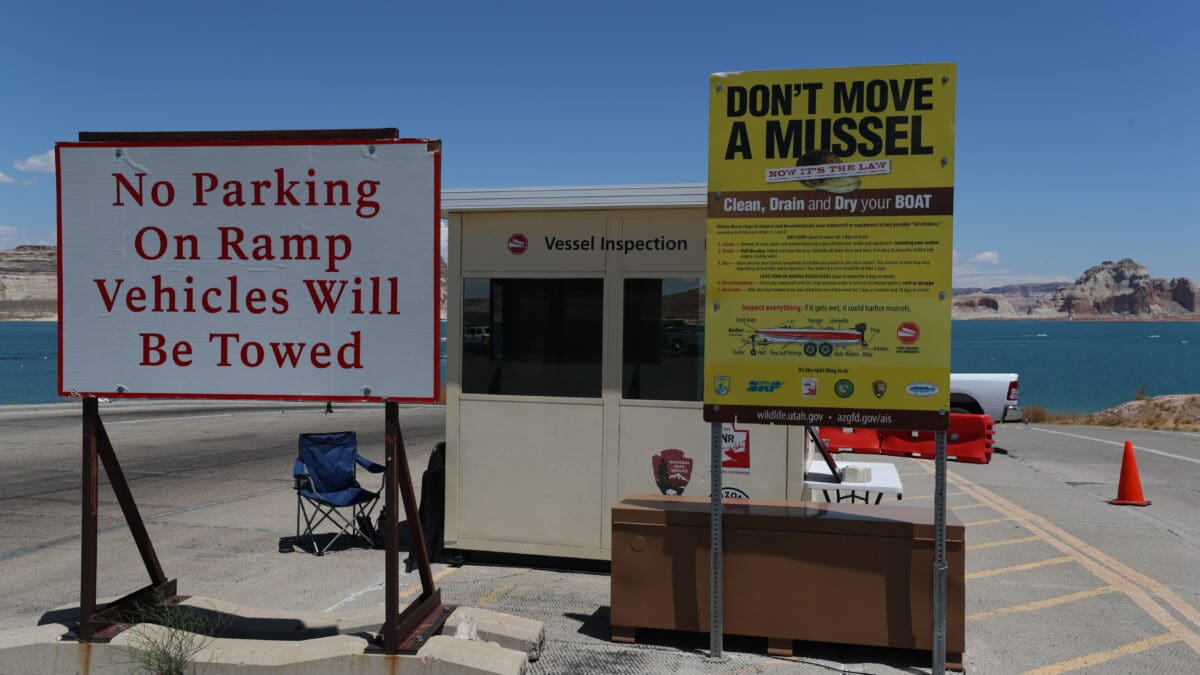Wildlife
DWR reminds boaters of mandatory course and fees to combat aquatic invasive species

Boat inspection at Lake Powell. Photo: Utah Division of Wildlife Resources
UTAH — The Utah Department of Wildlife Resources (DWR) urges boaters to prepare for lake outings this summer by fulfilling requirements to curb the spread of aquatic invasive species.
Utah residents and visitors planning to launch any form of watercraft, including paddleboards, kayaks, and motorized boats, must adhere to specific regulations designed to protect the state’s water bodies.
A key requirement for all boaters is the completion of an annual mussel-aware boater course, mandatory for everyone intending to launch a boat in Utah’s waters. The course aims to educate watercraft users on preventing the spread of quagga mussels, a notorious aquatic invasive species.
In addition to the educational course, operators of motorized boats are obligated to pay an annual aquatic invasive species program vessel enrollment fee. This fee, which is $20 for Utah residents and $25 for non-residents per watercraft, is separate from the boater registration fee, with each category requiring its distinct decal.
Bruce Johnson, aquatic invasive species lieutenant at the DWR, emphasized the critical role of these funds.
“The aquatic invasive species funds are instrumental in preventing the spread of quagga mussels from Lake Powell to other Utah waterbodies,” Johnson said.
The funds support the installation of efficient dip tanks across the state for boat decontamination and cover personnel costs for inspecting and decontaminating boats in areas lacking dip tanks.
Lake Powell, currently the only Utah waterbody with a confirmed presence of quagga mussels, mandates exit inspections for all departing watercraft. Following inspection, watercraft require professional decontamination before launching into other waters. If immediate decontamination is impossible, the owner must adhere to specific cleaning, draining, and drying guidelines, including mandatory dry times based on the season, to prevent mussel propagation.
The state has established over 40 inspection stations to facilitate these measures, some located at boat ramps and others along highways. Boaters are encouraged to familiarize themselves with these stations’ locations, available on the STD of the Sea website.


















